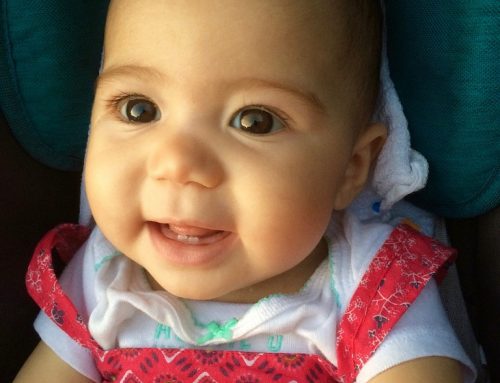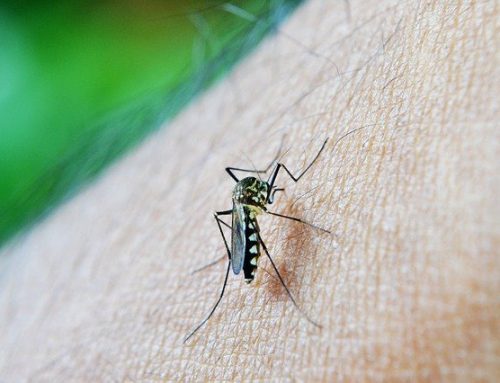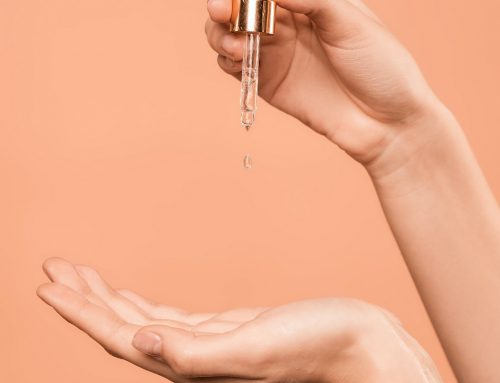In India, new mothers get plenty of unsolicited advice on infant care. Family members, neighbours, birth attendants, house-help all have their two cents to share. Many of the traditional infant care practices are tried and tested, sustainable, and safe since they evolved based on Indian living conditions. But some traditional childcare practices grew out of superstition, social bias, or no scientific basis and worse they are harmful to the baby. Such risky practices are still popularly recommended.
Even if our older generations practised them, do refrain from any childcare practice if it puts your baby in harm. In this post, we talk about some harmful traditional childcare practices that could lead to possible medical emergencies.
Traditional childcare practices which can harm a baby
1. Applying homemade paste/ubtan while bathing
Traditionally, caregivers applied a thick paste of turmeric, besan, milk and fresh cream to a newborn, usually before bath. It was allowed to remain for few minutes, and then semi-dried paste was removed by rubbing or scrubbing gently. This paste is applied as a cleanser as well as to remove excess body hair.

source: https://goo.gl/af6Atv
There are various reasons not to practice this cleansing/scrubbing method. Baby’s skin keeps developing through the first year of its life. The skin barrier in humans plays a vital role in preventing the entry of pathogens and for survival. Hence it is essential to maintain skin barrier integrity through this period via a gentle and appropriate cleaning and moisturising routine and maintaining skin’s pH balance (5.5-7.0 – neutral to slightly acidic pH ) [1].
Milk has hydrating and cleansing properties. Haldi is a known anti-microbial agent. But these days adulteration in milk (even the packaged or branded milk might be tainted with chemicals) and food items like turmeric, besan is rampant. However, using adulterated items especially milk can cause rash/bacterial infection on the baby’s skin. Besan again is a known allergen, and it triggers rashes in many babies. These can lead to compromising skin barrier leading to Atopic dermatitis or other skin conditions. Also, the paste may alter the skin’s pH balance to more alkaline.
Removing the dried paste is a real no-no as could hurt baby’s sensitive skin, sometimes even causing bleeding.
2. Applying talc/baby powders post-bath or post diaper change
In India, due to heat and humidity use of talcum powder/baby powder is prevalent. Actually, many of us, as babies, had talcum powder applied post-bath or post nappy change. Caregivers believe that applying talc/baby powder post bath can absorb sweat/moisture and sprinkling it after a diaper change can avoid diaper rash. Also, and very unfortunately, many parents apply talcum powder to make baby’s skin appear lighter in colour :-(.

source: https://goo.gl/M1rriK
Experts suggest that babies do not need talc or baby powder. Applying talc post diaper change has no real benefit, as the actual requirement is to apply a moisture barrier like coconut oil to avoid diaper rash. In fact, AAP recommends against any baby powder due to a risk of inhalation of fine particles and related complications [2].
In recent times, the prolonged use of talc has been associated with cancer. While the risks may not apply to babies, but in general it is good to avoid unnecessary skin products especially on baby’s sensitive skin [3].
Drying the baby well post bath and putting breathable fabric clothing is good enough to ensure moisture or sweat does not irritate baby.
3. Oil massage techniques

source: https://goo.gl/9uB6jN
Traditionally babies are massaged with oil right from the first week of birth. Many caregivers gave vigorous massage believing it strengthens bones and joints and helps weight gain. This practice of giving oil massage right after birth, putting oil in the nose/ears/navel area, and massaging vigorously is still prevalent. Doctors highly discourage these massaging practices [4].
Massage has many benefits for the baby as well as the mother. It is an excellent way to bond. However, practice massage with some care. Experts recommend not to massage with any oil for 3-4 weeks after birth. Firstly, that gives baby’s skin some time to develop and avoids issues of infection or affecting skin barrier due to oil used for massaging. Secondly, the cord stump usually falls off by this time. Accumulation of oil while massaging in the cord stump area can invite infection or other issues [3]. Putting oil in ears, nose & naval area can cause fungal infection, and it may spread to other parts of the body.
4. Nipple massage to drain off milk
Vigorously massaging a baby’s (especially a female infants’s) swollen nipples was a part of traditional oil massage. The practice had its root in the superstition that doing this would get rid of “witch’s milk“.

source: https://goo.gl/JxkwmR
Paediatricians highly discourage the practice of massaging the (slightly) swollen infant breasts. Maternal hormones like estrogen may pass onto baby at birth causing breast swelling in some babies. This swelling is normal and usually self-corrects. The swelling usually disappears without any intervention in a few weeks.
However, vigorously massaging the nipple area in an infant can cause chest infection or septic shock infection [5]. Such massaging may also lead to secondary bacterial infection & breast abscess [6].
5. Applying kajal
The traditional practice of applying Kajal/Surma/Kohl in the newborn’s eyes is still prevalent in India. Elders in the family, caregivers like Japa, massage wali, etc. usually encourage to apply Kajal to ‘ward off evil eye’ or protect the baby from ‘buri nazar’. Also, a popular but unfounded myth that encourages the application of Kajal, is for bright, big and ‘beautiful’ eyes. But, the shape and colour of the eyes depend on genes only, and the brightness or attractiveness to some extent depends on overall health (sleep, nutrition, reduced stress) and also ‘in the eyes of the beholder’. Another myth to apply Kajal is to improve eyesight. Some use it to prevent eye diseases.

source: https://goo.gl/jCqJq1
Doctors are against the custom of applying Kajal. Kajal, Especially commercially manufactured one, can make babies eyes itchy or watery or may trigger an allergy. Even branded Kajal is suspected to contain lead [7] and regular use of such lead-laced Kajal can be harmful to baby’s eyes and pose other health hazards. Also, eyes are sensitive and any contaminant (like dirt) or physical injury (even small scratch) while applying kajal can irritate (especially if the person applying Kajal has unclean fingers or sharp/big/uneven nails). If the kajal is not removed correctly from the eyelids or if it trickles to the narrow opening between eyes & nose it clogs the tiny pores on eyelid leading to sty [8] or can cause blockage & infection [9]. As per experts, there is no real benefit of applying Kajal to babies.
If you still intend to apply Kajal, prefer to make at home (to avoid contaminants). Also, apply with clean fingers (and clipped and blunted nails) and remove it carefully when bathing/cleaning baby.
6. Feeding practices
WHO highly recommends exclusive breastfeeding a baby for first the 6 months [10]. However, traditionally Indian caregivers offered cow milk, ghutti, honey within 2-3 after birth. In some parts of the country (mostly rural), offering pre-lacteal feed is still in practice [11].

source: https://goo.gl/31MuHa
Baby’s gut takes time to mature. Enzymes and bacteria essential for breaking down the food to absorb the nutrients are not fully functional before 4-6 months [12]. Hence, ideally, no food except mother’s milk should be introduced in the first 4-6 months (except baby formula when prescribed). Introducing an infant to food items before 4-6 months open entry gates for pathogens causing diarrhoea, other gastric conditions, deposition of fat. Some of these conditions can have a lifelong impact like obesity, diabetes etc..
Honey:
Experts recommend avoiding honey till 1 year of age. Honey, a regular item in many Indian households, may contain spores of Clostridium botulinum, a bacterium which germinates in baby’s immature gut. This causes a rare illness called infant botulism, could be fatal for the baby [13].
‘Balguti’ or ‘Ghutti’:
The practice of giving ‘ghutti’ or ‘balguti’ aka infant tonic, for improving immunity and protect baby from common ailments is still prevalent. It is a mix of Indian herbs, usually rubbed on a stone with little water, and fed to the baby in small quantity. Some parents also give it to resolve gastric issues like gas, improve digestion or as a remedy for colic. Caregivers give ‘ghutti’ right from the first month after birth.
Mother’s milk usually protects against many common ailments as it contains antibodies from the mother. Also, introducing herbs (and water) before 4-6 months can cause gastric problems. Issues like gas in the baby are common and usual due to a gut which is still maturing. Cycling exercises, gentle belly massage or tummy time can help overcome gas trouble.
Conclusion
Upholding traditional customs for childcare is a good idea. However, there should be a scientific rationale behind any childcare practice you adopt for the baby. Healthcare experts discourage traditional childcare practices, especially the ones rooted in superstition, bias or myths.
Refrain from practices that can harm your baby in the name of tradition.





Such an informative article. Must read for all new mom’s!
Thank you Priya :-).
Hello! I just would like to give a huge thumbs up for the great info you have here on this post. I will be coming back to your blog for more soon.
Thank you.